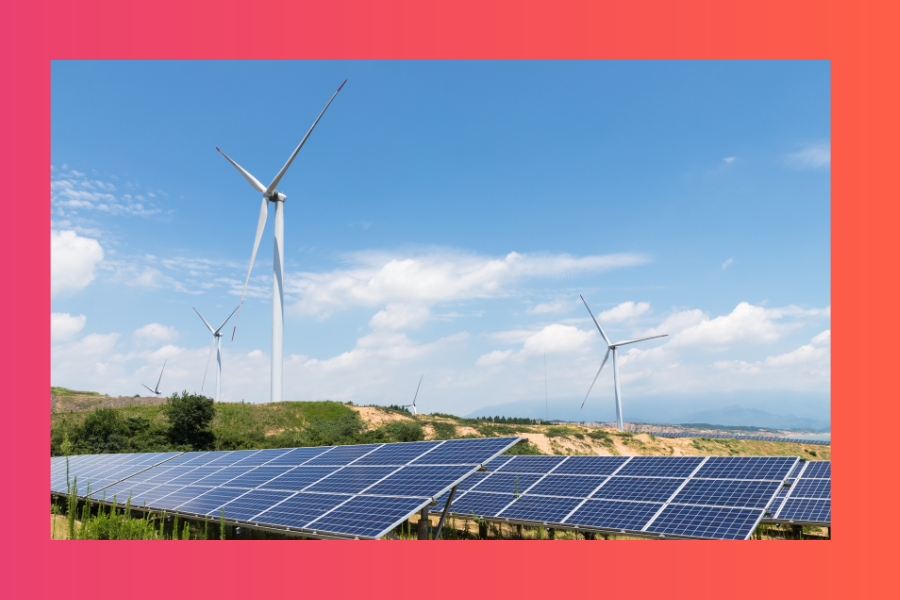World’s Biggest Rooftop Solar Power System to Be Installed in Brisbane Airport
The Brisbane Airport Corporation (BAC) will install rooftop solar PVs that will generate 9,315 kilowatt-hours per year. The 6-megawatt system will...
4 min read
![]() Solar Trust Centre Team
:
Apr 5, 2022 8:00:00 AM
Solar Trust Centre Team
:
Apr 5, 2022 8:00:00 AM

Since their creation, airports have always been a source of inspiration and identity for the communities around them. Airports today are a common sight in or nearby any major city, yet because of this, it's easy to forget that the air travel industry as we know it - and thus airports - are little more than 100 years old, given the first commercial flight only took place in 1914. As a result, we’re really still learning how to more effectively use airports when it comes to urban planning, and the contribution they can make to our communities beyond their utilisation as a locale for the arrival and departure of flights. The ways in which airports can serve as a domain for the growth of renewable energy is a great example of this.
By many measures, airports offer an ideal location for the growth of renewable energy in a community. There is often substantial land available within their bounds. Furthermore, there are typically comparatively few buildings surrounding them, and these are often low density (minimising or outright eliminating the shadowing that can occur and hinder a solar installation’s performance when one tall building overshadows another). Just the same, of the buildings that do exist - such as the main airport concourse itself which all travellers will be familiar with, or the hangars which are used for the storage of aircraft and other goods - there is commonly a very sizeable rooftop area, which can, of course, be ideal for the installation of large rooftop solar systems.
If not for the airports themselves, the surrounding land is also often a great area for new renewable energy installations to take off. Such land is often undeveloped, underutilised, or both. In turn, this sort of land is often (comparatively) affordable relative to costs elsewhere for it in a locale, and this provides an easier path for airports from a business perspective that wish to expand their footprint to do so, without a great array of financial barriers, in comparison to other businesses such as train stations which can often find any expansion work is immensely expensive when it comes to acquiring surrounding land. So all up, these factors are all favourable in terms of enabling the greater use of solar power at airports.
There is no disputing the fact that the ability of human beings to take flight is a modern marvel. While it’s commonplace today - and easy as a result to take for granted - the fact is it was only in 1903 that the Wright Brothers got the first plane into the air, so when looking at the story of flight from a historical perspective, we’ve really only been doing it for a mere blink of the eye. But just the same as human flight is an astounding innovation, it’s also one where there remains room for improvement. This is because the reality is a typical flight will emit a huge amount of carbon dioxide. A flight between Melbourne and Sydney for example? Well, according to research from the University of New South Wales, it’s held this trip will result in around 5.5 tonnes of carbon dioxide being emitted.
Although solar-powered planes and other renewable-backed innovations in this area are in development - and so in the future, we could potentially see clean and green air travel occur - such innovations are not expected to become available and rolled out overnight, and meanwhile the problem of climate change remains. In turn, there are indeed many other avenues available for the aviation industry to adopt more eco-friendly processes across the operations of airports and to offset activities that cause emissions, where emission-free alternatives aren’t (yet) viable.
Another reason that interweaving airports and renewable energy installations are enticing goes beyond the concrete benefits - though substantial they are - of renewable energy, and instead concerns the identity of a community, and how it seeks to project itself to visitors of it.
Sure, the pandemic has resulted in a substantial decline in air travel - and there are indeed some positives to this, such as the capacity for people to enjoy a better work-life balance in working from home, in addition to the eco-benefits of having fewer emissions caused by air travel occur - but there’s the expectation in future that the rate of air travel will pick up. This is the case even if it doesn’t quite go back (at least for many, many years) to a rate resembling the pre-pandemic era. In short, we will fly again, and airports will - eventually! - be big business again.
Accordingly, the way in which an airport and its surrounds are presented to a traveller arriving (and also departing) is an important aspect of a community’s projection of its identity to the world. The presence of solar power at or around an airport illustrates a community is modern, dynamic, and also conscious of its role - one that ultimately all communities must play - in seeking to pursue more eco-friendly practices, and stop the worsening effects of climate change. It’s why for instance Melbourne can be very proud of the solar farm its airport added in 2021. At a size of around 192,000m² in total - which is approximately equal to 26 soccer fields! - it’s held that this solar farm has the capacity to power all four of the terminals which operate at Melbourne Airport.
Even in instances where it’s not possible - due to limitations of space in the airport and its immediate surrounds, or other factors - to add a renewable energy installation on-site (more on that in a moment) it’s certainly still doable for airports to embrace the use of green power in their daily operations. Sydney Airport is an example in this regard, having signed a contract with Origin Energy in 2018 to see up to 75% of its electricity supply provided via the Crudine Ridge Wind Farm, in New South Wales’ Central West region. This said, when it comes to wind and solar, the advantages of the latter can be very clear as it concerns airports.
Obviously, it’s not hard to envision why powerful wind turbines which can sit very high in the sky could pose a real hazard to the safe and routine operations of an airport and its aircraft. This is not to say wind power isn’t terrific, it’s just that in certain instances such as this there are limitations that don’t exist in the same way with solar power. It’s why when it concerns the growth of renewable energy installations that are visibly in use at and in the immediate surrounds of airports - and as distinct from instances where power is being used at airports that have indeed been derived from wind, but sourced off-site like in Sydney Airport’s example - going forward it can be expected solar installations will become more and more common.
For anyone inspired by the green gains being seen at airports in Australia and around the world, it’s worthwhile to remember that a big journey ultimately involves a lot of little steps. This is true as it concerns the addition of solar power to airports in Australia and across the globe, but also as it pertains to solar power generally and its installation at various places throughout our local communities. Accordingly, for any household that is yet to get solar but has been thinking about it, now is a great time to read more about the many ways in which solar power and smart devices can be put to great use around a home and property, and in turn what exciting possibilities could await solar power owners in the future.

The Brisbane Airport Corporation (BAC) will install rooftop solar PVs that will generate 9,315 kilowatt-hours per year. The 6-megawatt system will...

A comparison between Australia and the United Kingdom when it comes to solar power may appear an unusual endeavour at first glance. After all, while...
-2.jpg)
It’s widely known that Australia is land which has keenly embraced solar power. In fact, it’s been held that Australia has had the highest uptake of...